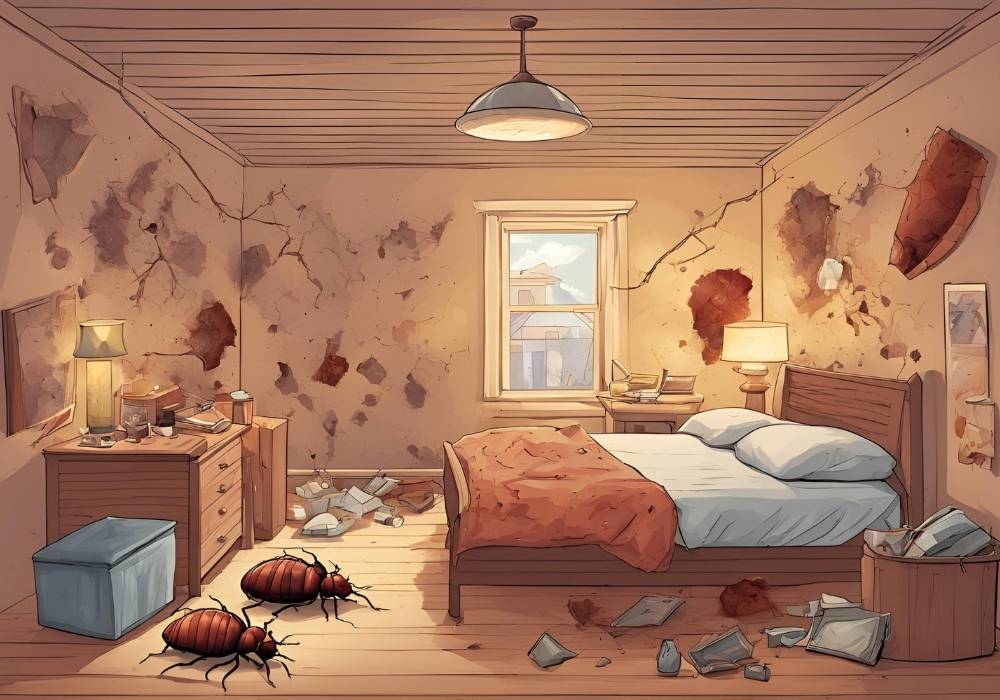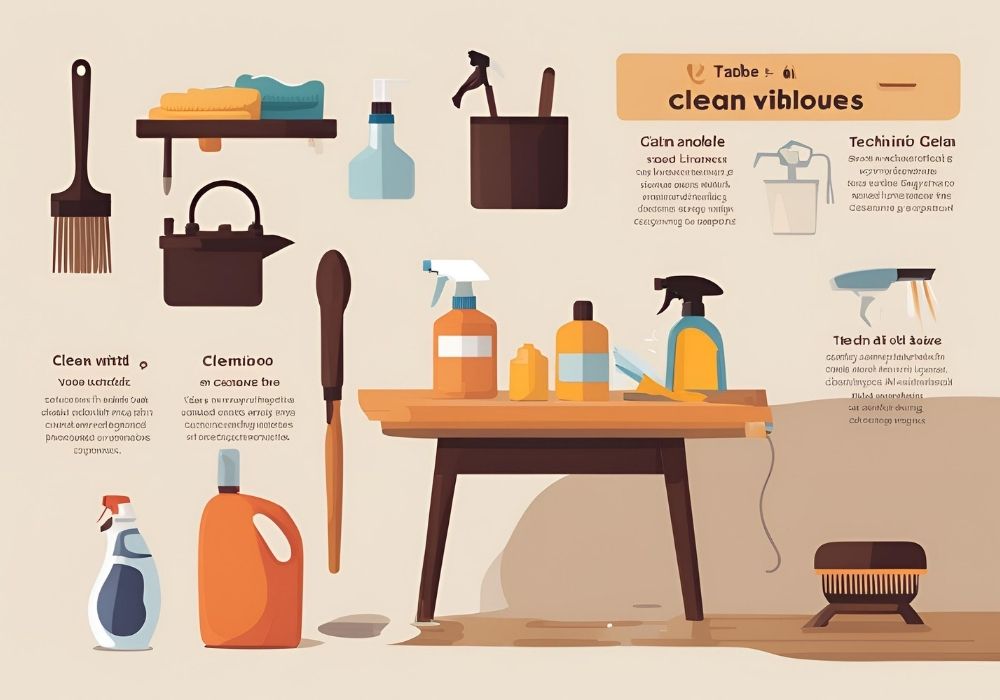Bed bugs—hearing their name alone is enough to make anyone’s skin crawl. These pesky, blood-sucking insects are notorious for their ability to lurk unnoticed in homes, hotels, and even public spaces. But why are they so difficult to spot? It all comes down to their stealthy hiding spots.
This article will examine bedbugs’ favorite hiding places and offer actionable advice for homeowners, travelers, and pest control professionals on how to identify and deal with infestations. By understanding where these pests hide, you’ll be one step ahead in keeping them out of your life.
Why Are Bed Bugs Hard to Detect?

Bed bugs are masters of concealment. Their tiny, flat bodies allow them to fit into the narrowest of spaces, and they are nocturnal, meaning they emerge primarily at night when we’re asleep. Couple that with their propensity to multiply quickly, and you’ve got a recipe for an infestation that can spiral out of control before you even realize it’s there.
Knowing their hiding spots is crucial—it helps you catch an infestation early and deal with it effectively.
The Classic Hiding Spots of Bed Bugs
When identifying bed bugs, many people think they only reside in mattresses. While the bed is a favorite place due to its proximity to their food source (us), these critters are far from picky. Here are some common hiding spots:
1. Beds (Mattresses, Box Springs, Bed Frames, and Headboards)
The most obvious place to look for bed bugs is, of course, your bed.
Mattresses: Bed bugs often hide in your mattress’s seams, piping, and tufts. Look for tiny black spots, fecal matter, or minor brown bugs.
Box Springs: Since box springs are dark and less disturbed, they are prime hiding spaces for bed bugs to lay eggs and multiply unnoticed.
Bed Frames and Headboards: Inspect the cracks, crevices, and joints in the wood or metal frame and behind your headboard.
How to Check

Use a flashlight and a thin object, such as a credit card, to probe into cracks. Look for live bugs, tiny white eggs, or black stains.
2. Furniture
Couches and Chairs
Bed bugs hide in upholstered furniture, especially in the seams, under cushions, and in folds of fabric. If you’ve recently purchased second-hand furniture, it’s worth inspecting it thoroughly.
Sides and Undersides of Furniture
Wooden furniture like nightstands, dressers, and desks offer excellent hiding spots due to cracks, joints, and undersides that often go unchecked.
3. Carpets and Rugs
Bed bugs can take cover in the tiny gaps where carpets meet walls or under area rugs. They may also hide in the fibers of thick rugs.
Tip for Detection
Vacuum your carpets often, focusing on the edges and corners where bed bugs may lurk.
4. Walls and Baseboards
Cracks in walls, gaps between baseboards and flooring, and behind peeling wallpaper are all possibilities. Electrical outlets and light switch plates can also be discreet entry points and hiding places.
Consider using a magnifying glass to check these spots during your inspection.
5. Luggage and Travel Gear
This one’s for travelers—bed bugs are relentless hitchhikers. They often sneak into your luggage, backpacks, and tote bags in infested hotel rooms. From there, they make their way into your home.
Prevention Tip
When staying at a hotel, store your luggage on a luggage rack away from the wall and inspect the room upon arrival.
6. Clothing and Linens
Bed bugs don’t often stay on clothing while being worn, but they can hide in fabric folds, inside drawers, or even on hanging garments. Linens in storage are also not immune.
Wash and dry suspected items at the highest heat settings to kill any hidden bed bugs and their eggs.
7. Electronics and Appliances
While less common, bed bugs can nest in appliances, laptops, or TVs. Devices often kept warm and undisturbed—like alarm clocks—are particularly attractive to them.
8. Cracks and Crevices in Your Home
Any narrow hiding spot will do. This includes cracks in floorboards, gaps between wall panels, or even spaces in brick walls.
Regular home maintenance can help eliminate these gaps and reduce your risk of infestation.
Why It’s Important to Stay Vigilant While Traveling
Bed bugs aren’t just a problem at home—hotels, buses, trains, and even airplanes can harbor them. Awareness and prevention are key when traveling.
Proactive Steps for Travelers:
- Upon arriving at a hotel, inspect the bed, headboard, and furniture for any signs of bed bugs.
- Keep luggage on a luggage rack, away from walls and beds.
- When returning home, immediately wash and dry clothing on high heat and inspect luggage before storing.
These steps can prevent you from inadvertently bringing home unwanted guests.
What Should You Do if You Find Bed Bugs?
If you detect bed bugs, it’s critical to take immediate action to stop the infestation from spreading. Here are some steps to take:
Act Quickly
Start by isolating the affected area. This may include encasing your mattress or sealing cracks in your home.
Vacuum Thoroughly
Use a vacuum with strong suction and disposable bags to remove visible bed bugs and their eggs. Dispose of the vacuum bag immediately after use.
Wash Everything
Wash all bedding, linens, and clothes in hot water and dry them on high heat. Heat kills both bed bugs and their eggs.
Seek Professional Help
Bed bugs are challenging to eliminate without professional intervention. Pest control experts have the tools and experience to deal with infestations effectively and stop them from recurring.
Whatever you do, avoid using over-the-counter pesticides as they may drive bed bugs deeper into hiding, making the infestation worse.
Protect Your Home and Peace of Mind
Bed bug infestations are a nightmare, but staying informed and vigilant can help you protect your home, health, and peace of mind. Regularly inspecting hiding spots and following preventative steps during travel can significantly lower your risk of an infestation.
If you’re battling an infestation or want to ensure your space is bed bug-free, don’t hesitate to consult a pest control specialist. Stopping bed bugs early saves time, money, and stress.
Bed Bug Behavior and Habits
Understanding bed bug behavior is critical to effectively preventing and addressing infestations. Bed bugs are primarily nocturnal pests, emerging at night to feed on the blood of their hosts, typically humans. They are attracted to body heat and carbon dioxide, making bedrooms and sleeping areas their most common habitats. Despite their tiny size, bed bugs are adept at hiding in cracks, crevices, mattress seams, furniture joints, and even behind wall hangings.
These pests can survive for weeks or even months without feeding, making them resilient and difficult to eliminate without professional intervention. Bed bugs do not fly, but they are excellent hitchhikers, often spreading through luggage, clothing, or used furniture. Understanding their habits can help you locate their hiding places and take strategic action to eradicate them effectively.
Feeding:
- They prefer to feed on humans but will also feed on other mammals and birds.
- Will readily travel 5-20 feet from established hiding places (called harborage) to feed on a host.
- Even though they are primarily active at night, they will seek hosts in full daylight if hungry.
- Feeding can take 3-12 minutes.
- The rusty or tarry spots found on bed sheets or in bug hiding places are because 20% of the time, adults and large nymphs will void remains of earlier blood meals while still feeding.
Life stages/mating:
- Bed bugs need at least one blood meal before the individual bug can develop to the next of the six life stages.
- They can feed more than once.
- Each stage also requires the molting of skin.
- To continue to mate and produce eggs, males and females must feed at least once every 14 days.
- Each female may lay 1 to 3 eggs per day and 200-500 eggs per her lifetime (6-12 months but could be longer).
- The egg-to-egg life cycle may take four to five weeks under favorable conditions.
Living conditions:
- Bed bugs can survive and remain active at temperatures as low as 7°C (46°F), but they die when their body temperatures reach 45°C (113°F).
- To kill bed bugs with heat, the room must be even hotter to ensure sustained heat reaches the bugs no matter where they are hiding.
- Common bed bugs are found almost anywhere their host can live.
- Tropical bed bugs (Cimex hemipterus) require a higher average temperature than the common bed bug and are found in tropical and subtropical areas.
Frequently Asked Questions
1. How do I know if I have bed bugs in my home?
Common signs of a bed bug infestation include itchy bites, minor blood stains on your sheets, and tiny dark spots (bed bug excrement) on mattresses or furniture. You may also spot live bed bugs or shed skins in their hiding places.
2. Where do bed bugs commonly hide?
Bed bugs typically hide in cracks and crevices near where people sleep. Common locations include mattress seams, bed frames, headboards, baseboards, and behind picture frames or electrical outlets.
3. Can bed bugs spread diseases?
No, bed bugs are not known to transmit diseases. However, their bites can cause itching and discomfort, which may lead to secondary infections if scratched excessively.
4. How do I prevent bed bugs when traveling?
Before settling in, inspect hotel beds and furniture for signs of bed bugs. Keep luggage off the floor and beds, and use protective covers if possible. Once home, wash and dry your clothes at high temperatures to kill hitchhiking bed bugs.
5. Can I get rid of bed bugs on my own?
While DIY methods like vacuuming and washing infested items can help, bed bugs are challenging to eliminate. It’s best to contact a professional pest control service for severe infestations to ensure thorough treatment.
Final Thought
Bed bugs may be minor, but their impact can be significant. By understanding their behavior and taking proactive measures, you can safeguard your home and maintain your well-being. Knowledge and early action are your best defenses against these unwelcome pests. Stay alert, stay prepared, and don’t hesitate to seek expert help when needed.
Spotting even one-bed bugs warrants immediate action—they multiply fast!











